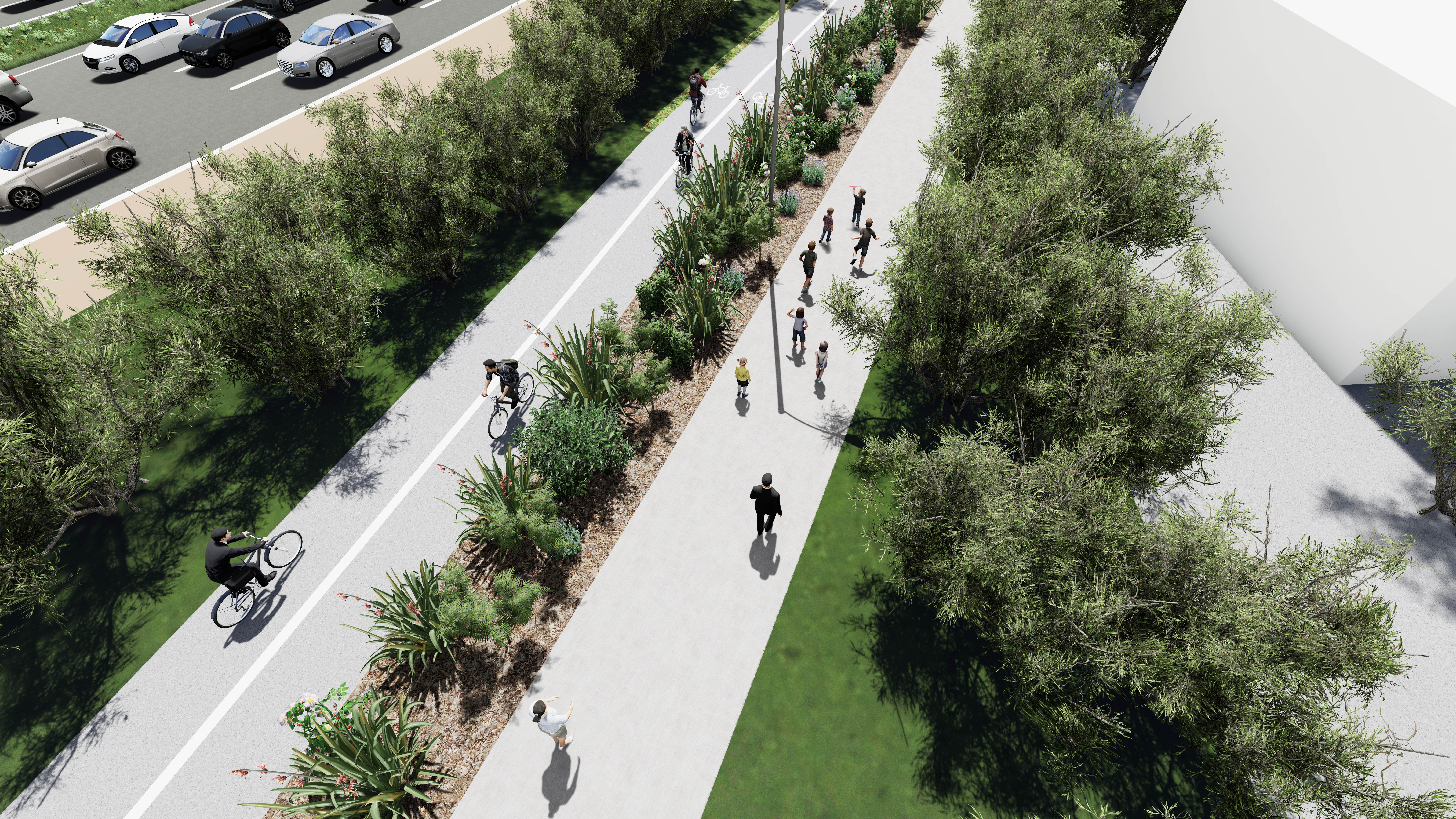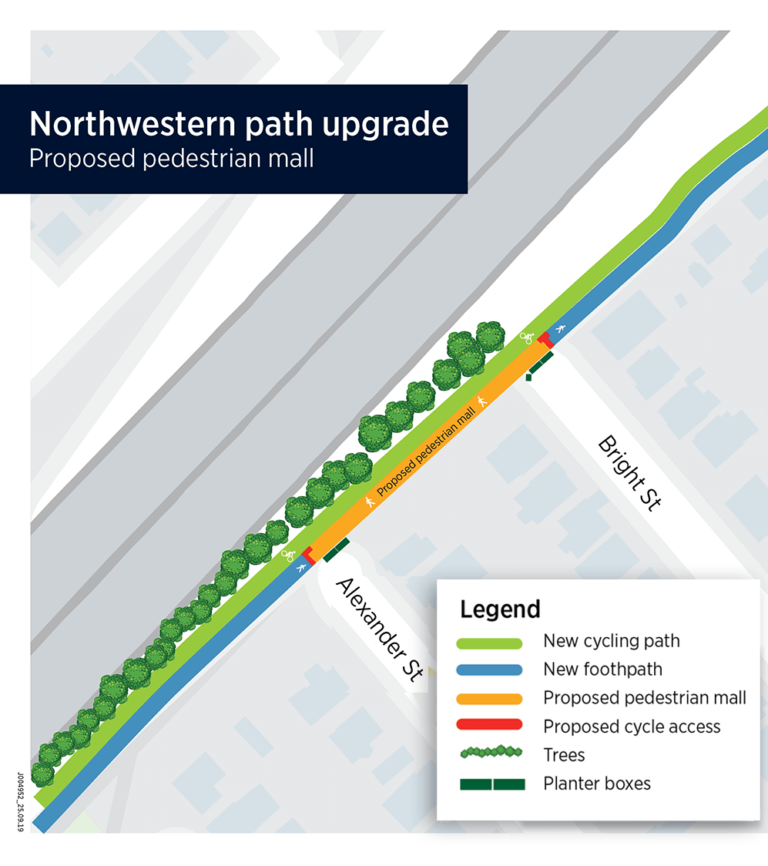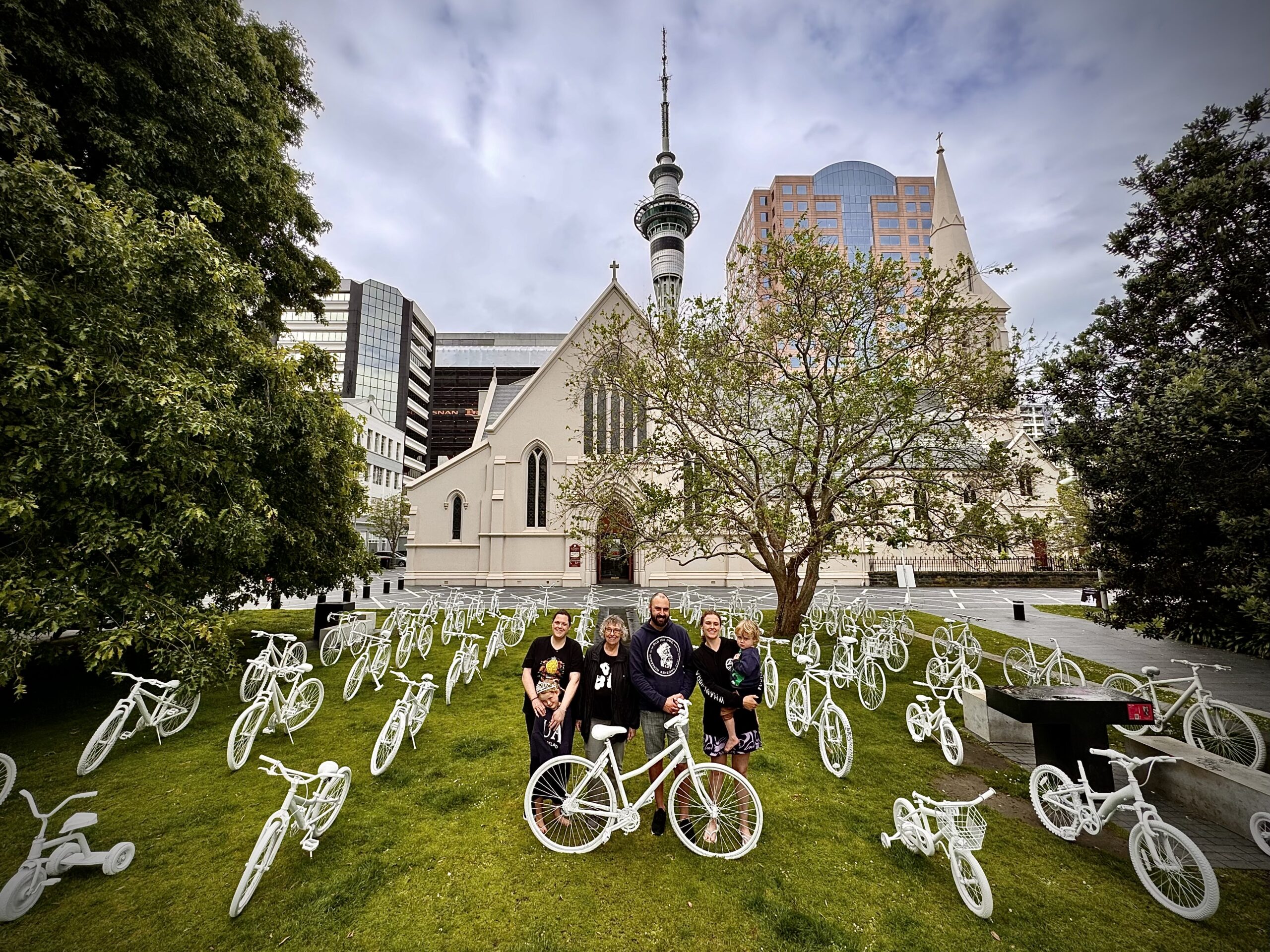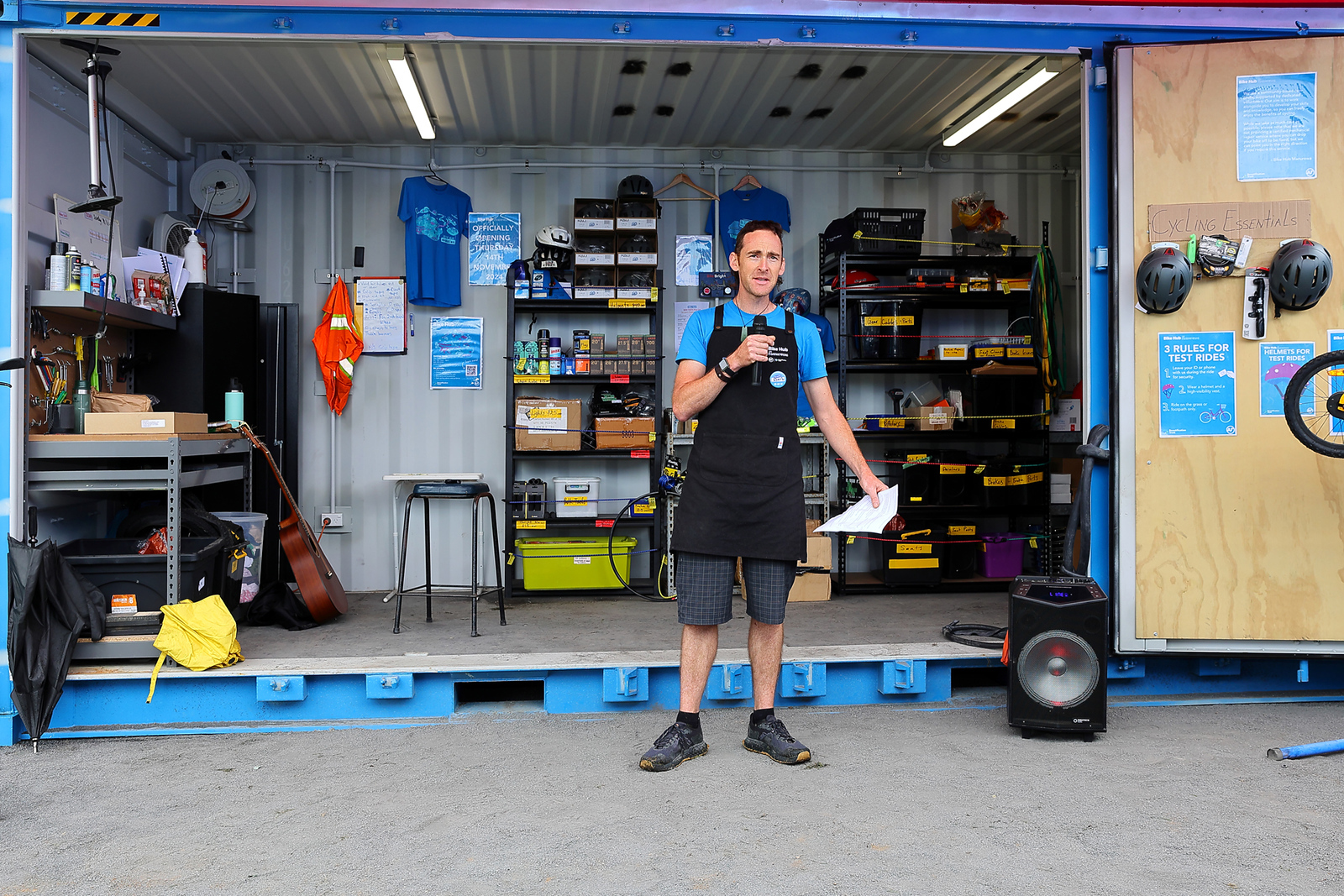Auckland Transport is moving ahead with the Northwestern path upgrade at the dangerous pinch-point in Kingsland. We’re thrilled to share this win, and eager for AT to crack on with it.
The problem: You’ll recall that in early 2018, we joined forces with Newton Central School to propose adding a footpath alongside this busy shared path. In early 2019, the situation became critical and the walking school buses were cancelled out of safety concerns. Since then, AT has run a campaign for courtesy on the path while also working on a design to make this busy route safer for everyone who uses it.
The solution is pretty much what we called for: a separated footpath and cycleway for 850m from Central Rd to Haslett St. Here’s the project page and here are the plans. There will also be two drop-in info sessions, on the path under the Bond St overpass, on Tuesday 15 October, 7:30-9:30am and Wednesday 23 October, 4- 6pm.
Feedback is open until 31 October
Scroll down to see further details – but we suggest keeping your feedback simple:
-
- Yes please, just do it!
- Soon as!
- More like this, and soon, on other sections of the path!
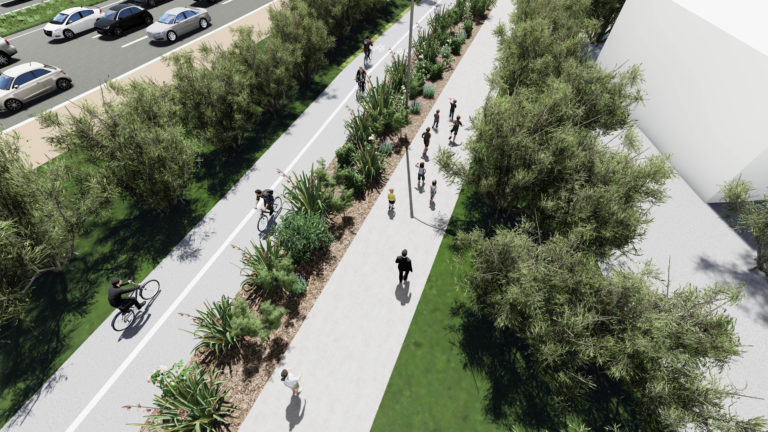
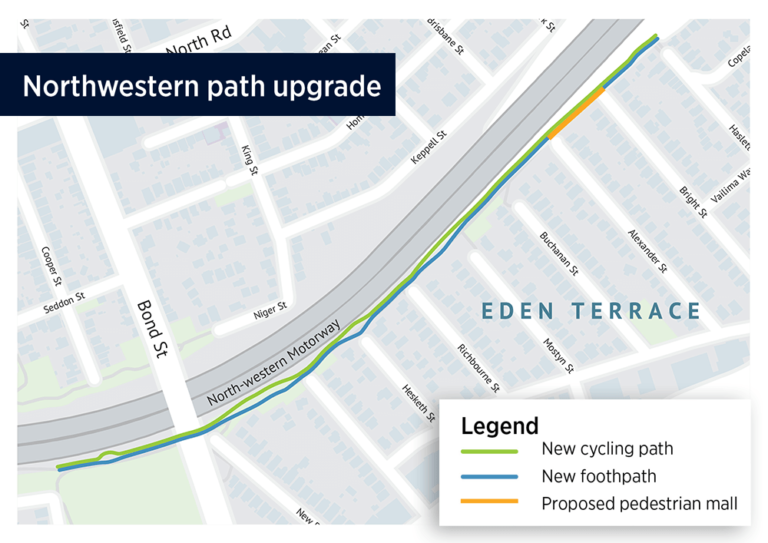
A closer look at what’s proposed and why
Here’s what AT is proposing, with a construction timeline of mid-2020. We’d love to see work start ASAP so kids can enjoy safer travels for even more of the school year.
- Construct a new 850m long cycle path and footpath between Central Road and Haslett Street.
- Separate the footpath and new cycle path with low-lying planting, berm space, and/or kerbs.
- Reconfigure the access points onto the new cycleway and footpath to improve visibility.
- Remove five on-street car parks to allow improved vehicle turning movements at the end of Bright St and Alexander St.
- Reclassify the driveway at the end of Alexander St as shared space, to allow pedestrian movement through here while maintaining vehicular property access
- Reclassify the thoroughfare road between Bright St and Alexander St as a pedestrian mall (i.e. pedestrian-only zone) to stop vehicle movements through here (with exceptions for emergency vehicles and authorised vehicles that have received prior permission from AT). The legal reclassification will enable enough space for the footpath and the separated cycle path. Full details in the Statement of Proposal, which also explains how the decision was arrived at, and how to have your say.
Note: We’ve been told Takau St will be addressed separately. We’re happy with this two-part approach, as it enables the most critical safety fix to happen faster, inside existing budgets and timetables. We are also aware of people raising concerns – particularly about blind corners – on other sections of the path further west.
Another thing: this isn’t just about safety; it’s also about capacity on one of the city’s busiest and fastest-growing biking and walking routes. The NW Cycleway is traditionally the city’s second-busiest path, after Tamaki Drive. Check out the graphs below from our cuzzies at Greater Auckland. And here’s the kicker: during the recent record rainy August, ridership was not only 9% higher on the Northwestern than on Tamaki Drive – weekday ridership was an astonishing 24% higher, with 13 days of 1000+ trips, vs only 3 on Tamaki Drive.
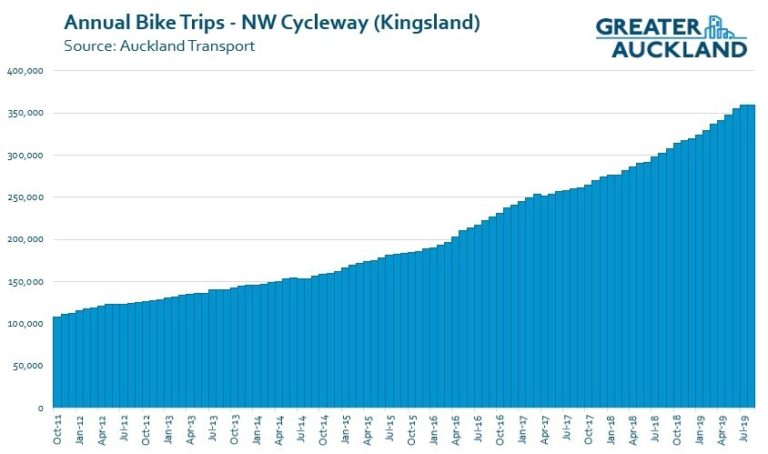 The rolling annual average tells the story of how the network effect – new and better connections – continues to magnetise new riders to the path.
The rolling annual average tells the story of how the network effect – new and better connections – continues to magnetise new riders to the path.
And with the path extension towards Westgate opening before Christmas, the extension of Waterview towards Avondale starting in October, plus the continued rise of e-bikes enabling longer and more diverse commutes by more kinds of people, and the ongoing micromobility revolution… – it will only get busier here.
What’s more, while AT doesn’t collect pedestrian data to the same degree, this section of the path is also well within the walkable radius of destinations such as Newton Central School, the Kingsland town centre, and if you are up for it, walking to Ponsonby or the City Centre. So it’s increasingly attractive to people walking, jogging, and out and about with pets, which puts even more pressure on the existing narrow path.
This whole story shows how vital it now is to plan all active transport routes with diversity and growth in mind. Bikes are climate action – and so are paths that accommodate people’s desire to bike, walk, scoot and generally go where they’re going in sustainable and enjoyable ways.
That’s why it’s so important to tell AT not just that you support this project, but also that this project is a sign of things to come. Wider, separated paths for all kinds of active travel will only become more necessary in the months and years ahead. Where we’re going, we’re going to need not just more protected bike lanes – we need more climate-protecting paths.
Thanks for reading to the end – now hit that feedback button to say: Yes, Soon as, and More of this, please!

